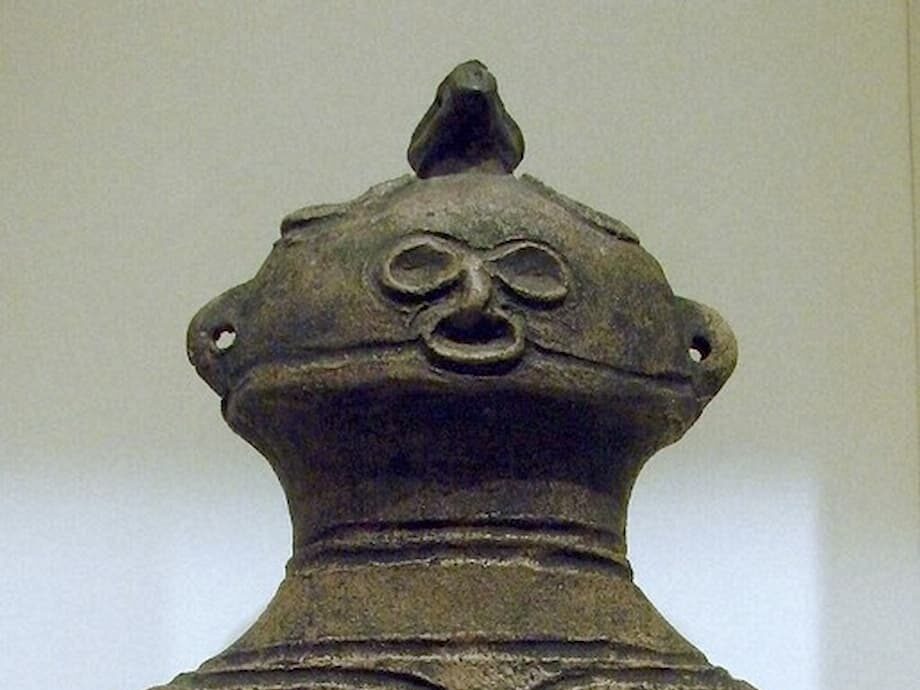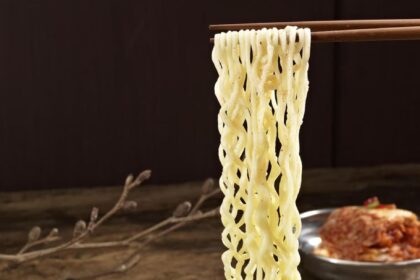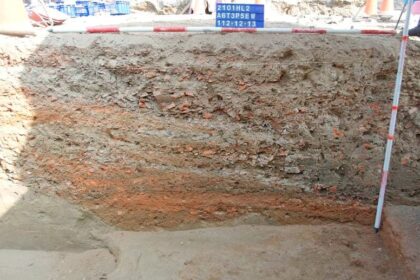Why Taro Okamoto still matters now
A spirited Paris retrospective this summer put Taro Okamoto back at the center of global art talk. The Japanese avant garde trailblazer argued in the mid twentieth century that art grows when opposites collide. He called this idea polarism. The proposal did not ask for neat harmony or tasteful synthesis. It demanded friction, shock, and vitality. That stance feels current in a moment when cultural identities are being renegotiated in galleries, online spaces, classrooms, and public squares. Okamoto asked artists and audiences to stop treating tradition as a museum rulebook and to look for energy in places long dismissed as marginal or primitive.
- Why Taro Okamoto still matters now
- What polarism means in art
- Breaking the spell of wabi sabi
- Jomon vitality and prehistoric echoes
- Mexico, pre Columbian ties, and a global modernism
- Cultural nationalism and the myth of homogeneity
- Ireland, Mexico, and the many selves of a nation
- Expo 70 to Expo 2025: a living legacy
- How artists and institutions can work with contradiction
- What to Know
He also insisted that a nation is never one thing. Japan, he said, carried at least two powerful aesthetic lineages that rarely sat together. One favors refinement and restraint, the taste now known as wabi sabi. The other is older, louder, and untamed, seen in the wild coils of Jomon pottery and the enigmatic dogu figures. That argument speaks to debates far beyond Japan. Many countries present a face of unity while holding buried, even opposite, ways of seeing. The moment is apt to revisit Okamoto. Japan is preparing for Expo 2025 in Osaka, while older residents recall Expo 70, when Okamoto created the Tower of the Sun. A new world fair will welcome millions of visitors between April 13 and October 13, 2025, with a theme focused on life design. The conversation about how to present national identity to global audiences is back.
What polarism means in art
Polarism took shape in a 1950 lecture where Okamoto rejected the idea that art must reconcile influences into gentle accord. He proposed that clashing forces can coexist within a single work, each kept alive by the other. The artist does not seek balance for its own sake. The artist nurtures tension. This was not nihilism. It was an ethics of vitality. Okamoto brought lessons from Surrealism in Paris and from his studies of anthropology. He knew that modern life is a tangle of speeds, technologies, and memories. Instead of sanding down those contradictions, polarism turns them into a source of form.
Against easy harmony
In mid century Japan, the idea of harmony carried special weight. Wabi sabi, the taste tied to tea ceremony aesthetics and Zen practice, prized irregularity, patina, and quiet. It also became a convenient shorthand for national character. Okamoto worried that this single story had hardened into a norm. When a culture begins to select only what fits the preferred mood, he argued, artists stop seeing the full range of their inheritance. Polarism cut across that tendency. It asked viewers to be alert to beautiful things that do not match.
Discord as creative energy
Okamoto’s canvases and sculptures do not seek polite agreement. Colors snap, forms twist, faces grin with menace or joy. He believed that collision could generate new myths for a postwar society. In a studio, discord can be a method. Bring two languages into one composition. Place a ceremonial motif beside an industrial accident. Let one material scar another. The resulting friction can carry a charge that polite taste cannot supply.
Breaking the spell of wabi sabi
In 1952, Okamoto urged artists to break the spell of wabi sabi. He did not dismiss it as weak or false. He argued that it had grown too dominant. The taste for understatement had smothered other native energies. He pointed to a quieter, classical lineage linked to Yayoi era ceramics. He also pointed to a far older one, the Jomon tradition, where fired clay erupts with cords, flames, and bulges. The contrast was stark: refinement and repose on one side, exuberance and excess on the other.
By restoring that second lineage to attention, Okamoto offered a map for artists who felt trapped inside a single national mood. He told them to study the parts of the past that feel alien and to let those forces shake their practice. The aim was not time travel. It was renewal. His provocation still helps young artists who wrestle with what institutions expect from Japanese, Irish, Mexican, or other labels.
Jomon vitality and prehistoric echoes
Jomon pots can feel like living creatures. Thick ropes of clay loop and surge. Openings flare like flames. The surface rattles with knots and ridges. Small figurines, often female or animal, stare back with goggle eyes. Archaeologists call them dogu. For Okamoto these forms had two gifts. They held memories of ritual and earth. They also carried a fierce sense of invention that matched modern desires for spontaneity and shock.
Seeing Jomon work as modern was a radical move in the 1950s. It challenged the assumption that the future of Japanese art should rest on polite minimalism. Okamoto said that the past contains many futures, and that one of them is rough, noisy, and full of heat. Many museums today present Jomon objects beside contemporary installations, a curatorial view that owes much to this argument.
Mexico, pre Columbian ties, and a global modernism
In 1967 Okamoto traveled to Mexico. He explored ancient cities and museum collections and began to track affinities between prehistoric Japan and Mesoamerica. He saw a kinship in the way ritual sculpture grips space and in the delight both traditions take in composite beings. He was not claiming a direct line of influence. He was chasing energies, the pulse that leaps when a form holds two states at once, sacred and playful, human and animal.
The trip landed in a fertile moment. Postwar art was increasingly global in practice and argument. Mexican artists, including figures around the sculptor and thinker Mathias Goeritz, were testing how history and emotion could shape public space. Across Asia and Latin America, artists refused to accept a single story that ran from Paris to New York. Okamoto’s Mexico research sat inside that shift, a move to build modern language from many archives rather than one.
Cultural nationalism and the myth of homogeneity
Okamoto’s critique pushed against a strain of cultural nationalism that turns one aesthetic into a national badge. Japan has long fielded debates over how a shared culture should be presented to neighbors and to the wider world. Those debates stretch from Meiji public policy to the postwar years and into the present. The appeal of a tidy story is strong. A tidy story travels easily. It can also trap artists inside a narrow script of what looks Japanese.
The record of Japanese culture is messy and rich, with courtly poetry, theater, Buddhist icon making, tea houses, merchant humor, and folk festival images all tugging at one another. Okamoto asked audiences to accept that mess as a strength. Cultures, like people, carry competing drives. When one set of values dominates, another remains, waiting to be rediscovered. Seeing that layered reality makes room for new work and for a broader idea of what national identity can be.
Ireland, Mexico, and the many selves of a nation
Consider Ireland in the late twentieth century. The state presented a conservative, Catholic, agrarian image for much of its modern life. Public institutions and popular media reinforced that frame. Underneath sat an older, more unruly inheritance, pagan stories, radical politics, and a hunger for urban sophistication. In the 1970s Seamus Heaney wrote poems about Iron Age bodies raised from bogs. Those images felt like a message from the deep past. They also pointed toward changes that would surface in the 1990s once the grip of the Church loosened.
Consider Mexico, a society that Octavio Paz described as a fusion born from conquest. The grid of Aztec power met the fierce Catholic fervor of Counter Reformation Spain. Even within that Spanish world there were crosscurrents, a drive to expel Islam paired with a habit of absorbing learning and style from Muslim courts. Mexico learned to move between codes, ceremonial order and carnivalesque release, public face and private mask. Okamoto saw this ability to switch between legacies as a kind of cultural training for modern life.
Expo 70 to Expo 2025: a living legacy
Okamoto reached the widest public at Expo 70 in Osaka with the Tower of the Sun. The sculpture rises more than 60 meters, a totem with faces that look to past, present, and future. Inside, a monumental Tree of Life climbs through the core. The work is a manifesto in concrete and steel. It refuses a single mood. It fuses primal symbolism with futuristic optimism and a carnival sense of spectacle.
As Osaka prepares for Expo 2025, the memory of that earlier fair looms large. Organizers expect more than 28 million visits over six months. The site will sit on an artificial island, the theme will point to how we shape life, and designers talk about prototypes of flying cars. Many residents remember Expo 70 as the first time they encountered people from dozens of countries in one place. The new fair arrives after years of pandemic anxiety and debate over mega events. It also offers a fresh test of how Japan presents itself to the world.
Okamoto often introduced his credo in public, a phrase that entered pop culture and that still captures his drive for energy over decorum. As the creator of the Tower of the Sun, he became a symbol of postwar reinvention who urged people to smash stale taste and to embrace contradiction.
Art is explosion.
That sentence was not a call for chaos. It was a demand for courage. In a world of soft agreement, sparks are required. The Tower of the Sun still stands at the former Expo site, a reminder that public art can hold opposing currents without apology.
How artists and institutions can work with contradiction
The lesson for artists today is practical. Search your field for the lineages that have been sidelined. Study them with care. Bring those forms into dialogue with the parts of your training that feel unassailable. Keep both in view. Resist the instinct to resolve too fast. New structure often comes from the slow friction of unlike parts working on each other.
Institutions face a related task. Museums and festivals can widen the frame of what counts as national art by programming overlooked lineages beside familiar touchstones. Critics can describe difference without turning it into exotic flavor. Educators can show students how culture contains arguments that run across centuries. The reward is work that feels alive to history and alive to the present.
What to Know
- Okamoto defined polarism as the creative coexistence of opposing elements inside one work of art.
- In 1952 he urged artists to look beyond wabi sabi and to reactivate the dynamic energy of Jomon forms.
- A 1967 trip to Mexico led him to explore parallels between prehistoric Japan and Mesoamerica, part of a wider postwar shift toward global modern art.
- The Tower of the Sun at Expo 70 embodies his ideas, joining primal imagery with futurist optimism.
- Expo 2025 in Osaka runs from April 13 to October 13, with expectations of more than 28 million visits and a theme centered on life design.
- Okamoto treated nations as layered cultures where buried traditions can contradict official taste.
- Examples from Ireland and Mexico show how a society can switch between different legacies that sit inside the same national story.
- Artists, museums, and educators can apply polarism by placing overlooked lineages beside familiar ones to spark new work.












